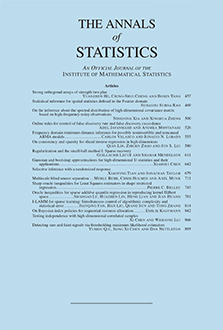Abstract
Analysis of variance (ANOVA) is an extremely important method in exploratory and confirmatory data analysis. Unfortunately, in complex problems (e.g., split-plot designs), it is not always easy to set up an appropriate ANOVA. We propose a hierarchical analysis that automatically gives the correct ANOVA comparisons even in complex scenarios. The inferences for all means and variances are performed under a model with a separate batch of effects for each row of the ANOVA table.
We connect to classical ANOVA by working with finite-sample variance components: fixed and random effects models are characterized by inferences about existing levels of a factor and new levels, respectively. We also introduce a new graphical display showing inferences about the standard deviations of each batch of effects.
We illustrate with two examples from our applied data analysis, first illustrating the usefulness of our hierarchical computations and displays, and second showing how the ideas of ANOVA are helpful in understanding a previously fit hierarchical model.
Citation
Andrew Gelman. "Analysis of variance—why it is more important than ever." Ann. Statist. 33 (1) 1 - 53, February 2005. https://doi.org/10.1214/009053604000001048
Information





